Black tulips: description, varieties and cultivation
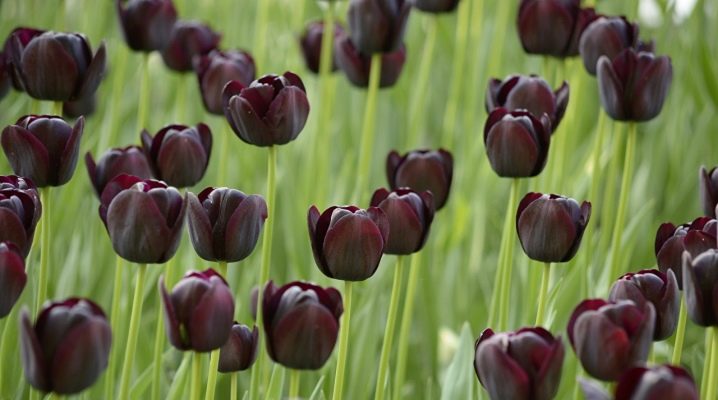
When springtime comes, the very first flower appears tulip, it belongs to the bulbous species. There are a variety of varieties that differ in the shape of the tulip cups, leaves and color shades. Both monochromatic and bicolor flowers can be grown.
Black tulips are flowers that come in a variety of varieties. They are decorative, have flowers of dark purple, black and blue, dark burgundy tones.
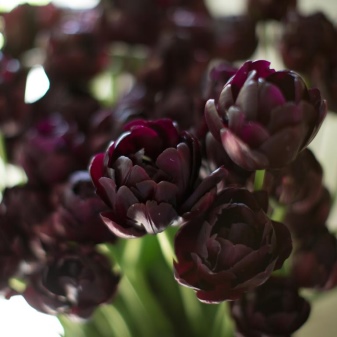
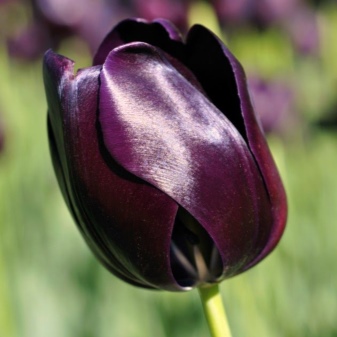
Breeding history
Gardeners and botanists have long dreamed of breeding black tulips, and in the end they succeeded. There are different versions of the appearance of this unusual flower.
The first version says that black residents of the Dutch city of Haarlem really wanted to have their own black tulip. They turned to all local botanists with a request to fulfill their desire. The people of Haarlem were ready to give a reward of 100 thousand guilders to anyone who can breed such a plant, because the dark flower personified the beauty of the inhabitants with black skin.
And on May 15, 1637, the famous naturalist and doctor Cornelius van Berle was able to breed a black tulip.
In honor of this, a carnival was announced, where all botanists and gardeners from all over the world were invited. The black flower itself was displayed in a crystal vase.
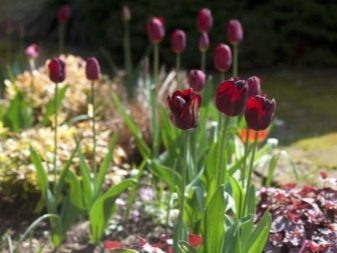
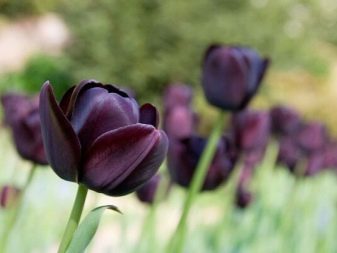
The second version tells that in February 1986 Henk van Dam, who was the director of the National Institute of Floristry in the Netherlands, announced that the first specimens of dark flowers were grown in the laboratory.
According to the third version, a month later, in March of the same 1986, the first black plant was bred by the Danish breeder Gert Hagemann.
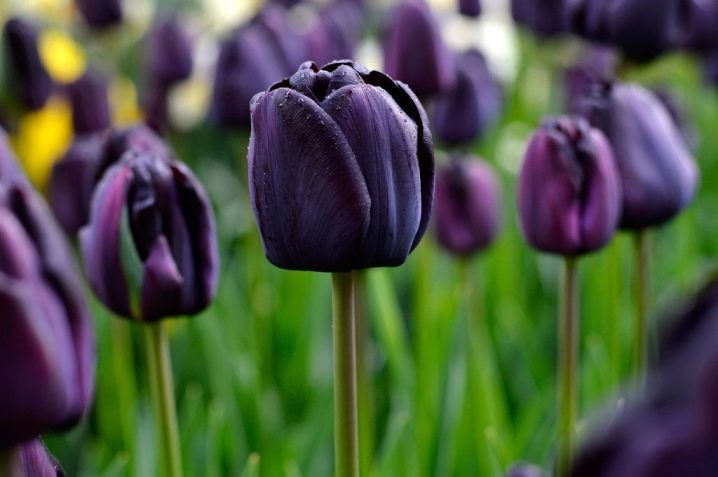
Peculiarities
The height of the flower varies from 11 to 101 centimeters. Roots can grow from the bottom of the bulb, but they are not the root system. The roots die off every year. Young bulbs may develop full stolons - these are shoots that are on the sides and grow either vertically downward or in different directions. Daughter bulbs may appear at the bottom of the shoot. The stem is erect, has a cylindrical shape.
Leaves - lanceolate-elongated, arranged alternately. They have a waxy coating, and because of which the color of the foliage appears to be green-gray. At the top there is a small leaf plate, its name is flag leaf. There is a large leaf on the bottom of the tulip.
The black tulip has one flower. But there are varieties that can grow 3 or 5 flowers. The perianth has 6 leaves, there are also 6 stamens, which have long anthers.
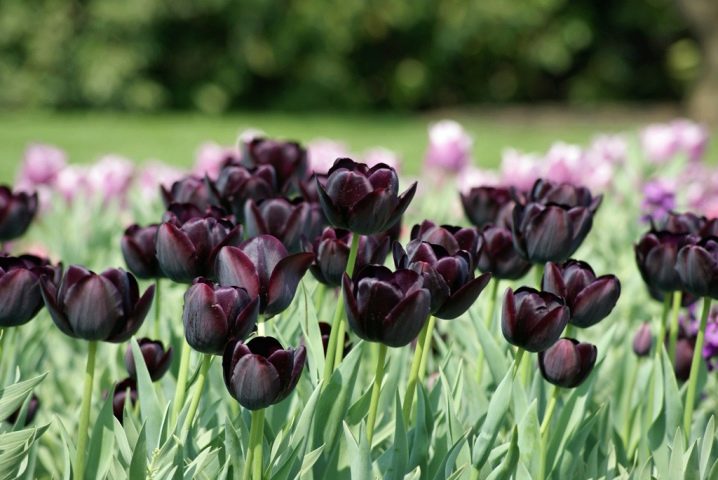
These tulips have dark purple, black and burgundy, black and red, black and blue or almost black colors.
Flowers differ in shape: goblet, oval, stellate, cupped, peony, fringed and others. The size of the flowers depends on the variety. There are flowers that have a length of 13 centimeters, their diameter can be from 4 to 11 cm, and when full disclosure occurs, the diameter can reach 21 cm.
The buds open in sunlight, they can close in the evening. When the weather is cloudy, the flowers do not open at all.
As soon as the black tulip has faded, the fruit will form.
The fruit is a box with three sides. Inside the fruit there are brown-yellow flat seeds that are triangular in shape.
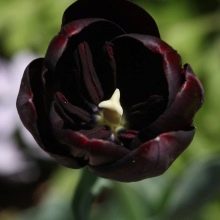
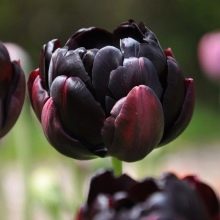
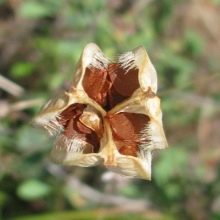
Varieties
Black tulips can be of various varieties, but none of them can be pure black. The depth of the color is also influenced by the illumination.
Black jack
Flowers have a dark purple tone, are included in a large group called "Triumph". Goblet buds that will not open. They grow up to 41-61 centimeters, have a dense stem. Tulips are suitable for cutting. Blooms in April or May.

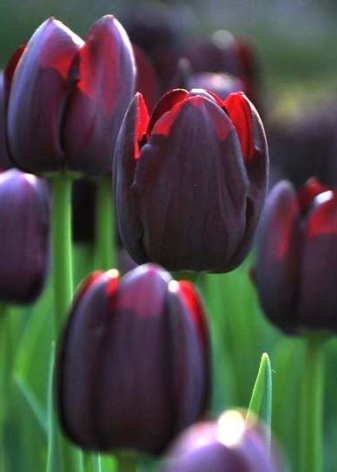
Ronaldo
Flowers have a dark burgundy hue, are included in the "Triumph" group. These tulips are unpretentious and can grow in windy areas. They have a dense stem and bud. Flowers - medium flowering, blooming in April or May.
Tulips are velvety-dark in color, have large flowers, reaching 9 centimeters.
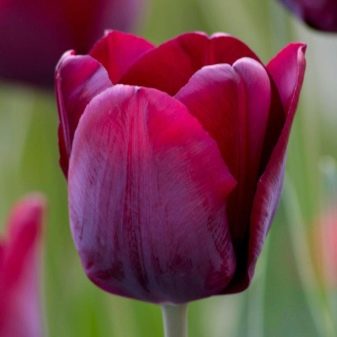

Queen of night
This variety is the blackest because it has a dark burgundy color. These are medium flowering plants; blooms in mid-May and blooms for 21 days. Tulips have a goblet, huge (height - 11 centimeters) flower and a dense long stem. They can grow both in a sunny place and in a partial shade. The tulip itself reaches a height of 66 centimeters.
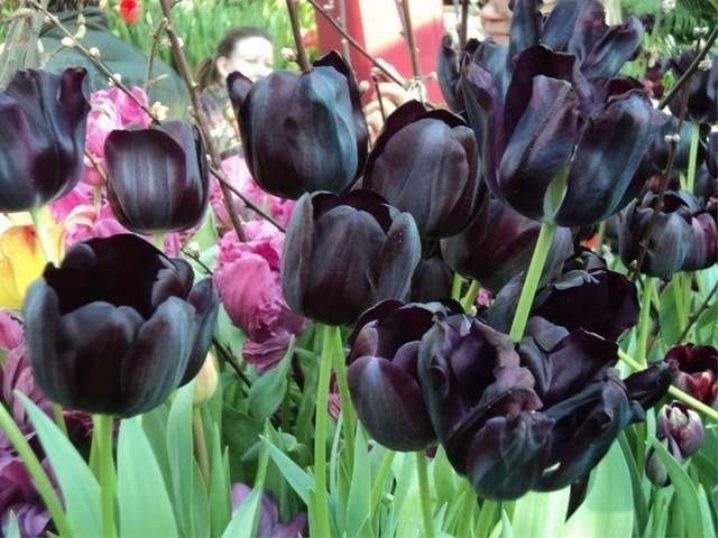
Black and white
The variety entered the category of Rembrandt variegated tulips. The flowers are distinguished by an amazing, contrasting black and white shaded color. It is better to plant this variety away from other flowers so that the variegation virus does not occur. These flowers are of medium height (approximately 41-71 centimeters). The flowers are goblet-shaped, the petals will be able to fully open in the sunlight. Blooms in mid-May.
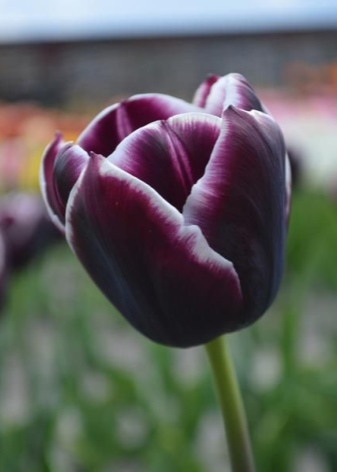
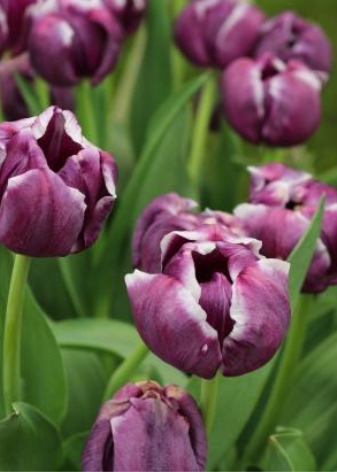
Black hero
The flowers are dark burgundy, almost black. They belong to the terry varieties, which may be called peony for their flower. The flower has 16-21 petals. The bud reaches a height of 8 centimeters, and if the plant opens completely, it can reach 12 centimeters in diameter. The black flower itself can reach a height of 51-56 centimeters. The plant blooms in late May; it can be planted in a garden with sunlight or partial shade.
This variety can be cut.
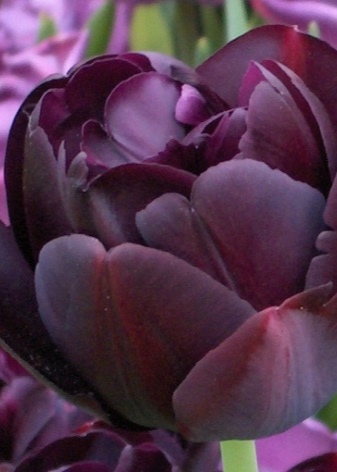
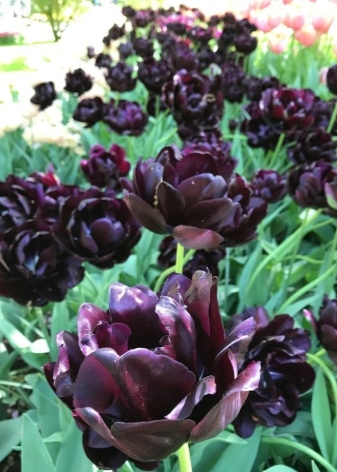
Black parrot
The flowers have a dark burgundy color, wavy petals, which have green stripes. The flowers can reach a height of about 11 centimeters and a width of 21 centimeters. The stem is dense, 46 centimeters. A tulip can grow well both in the sun and in a shady place. Flowering occurs at the end of May and lasts 14-21 days. Flowers can be cut or planted in the garden.
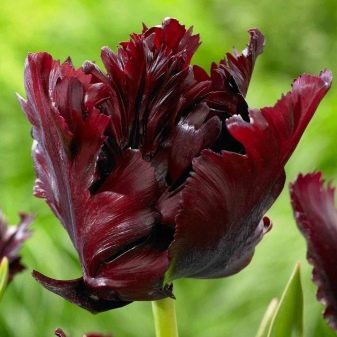

Cuban night
The variety can be attributed to the fringed appearance, the petals at the edges have a needle-like edging. The color is black and burgundy or black and purple. The tulip blooms in May and can reach a height of 56 centimeters. The stem is dense and perfect for cutting. The tulip itself can be grown in a flower bed.
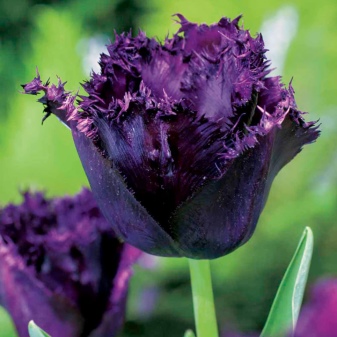
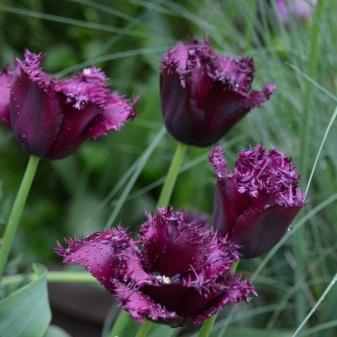
Black Beauty
The flower has a black color and a slightly burgundy hue. Belongs to a simple, late type. Flowering occurs in mid-May. The stem of a tulip can be up to 66 centimeters. The flower is dense, has a goblet shape.
Flowers of this variety can be used for cutting or for decorating a flower bed.

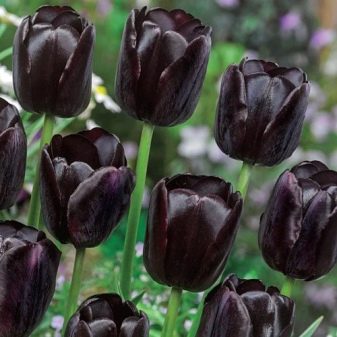
Growing conditions
Before planting bulbs in a specific area, you need to select and prepare that area well.
Recommendations for the choice of soil
Black tulips need a fertile, well-drained soil with neutral or slightly acidic soil. If the soil is acidic, then it must be limed. Flowers need sandy soil.
You cannot plant black tulips in an area where potatoes, tomatoes or eggplants were previously planted, because black tulips and these plants can have common diseases.
For black tulips, it is necessary to select fertilizers that contain superphosphate, potassium salt and nitrogenous substances. Most gardeners recommend adding humus.



Lighting
Black tulips can grow in partial shade, but for the most part they like light areas. If you plant these flowers in a shady place, they will grow weak and look bad. It is preferable to choose an area where there is good illumination, since black tulips need sunny places.
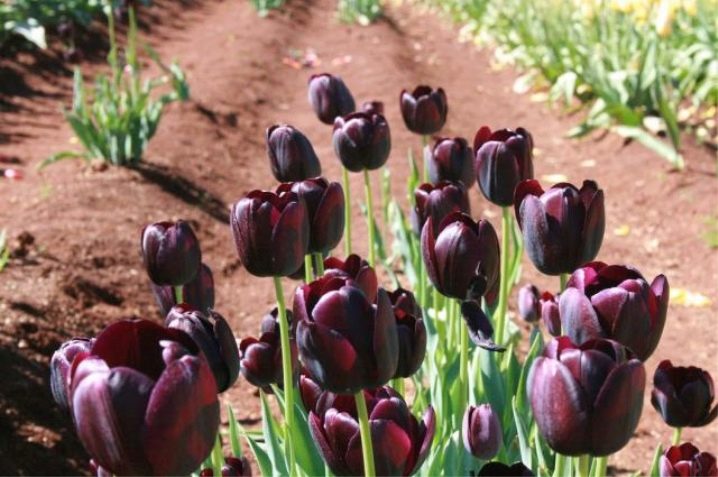
Humidity
Black tulip bulbs will not be able to withstand too wet soil and stagnant liquid. In spring, puddles can form in the lowlands, which will be detrimental to the bulbs. When the flowers grow actively, they need light moisture in the earth; in dry times, they will need to be watered.
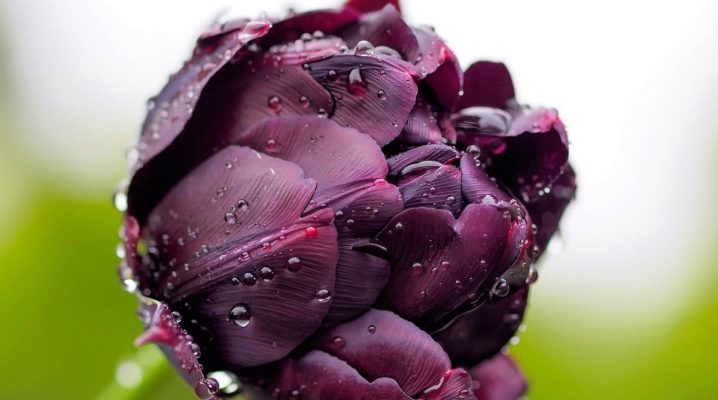
Landing
Before planting black tulips, you need to know certain rules. It is necessary to plant bulbs in autumn. You can plant them in the spring, but they won't bloom in the first year.
Before planting flowers, you need to check the soil temperature, it should be +6, +7 degrees. You also need to know that the bulbs need 21-28 days to root before the frost begins. If they cannot take root a little, they will die, or they can take root in the spring, but tulips from such bulbs will be weak.
Bulbs that were planted very early may germinate, but they will not be able to withstand the first frosts.
The soil must be prepared 14-28 days before planting the bulbs. The soil must be dug up when fertilizing is applied.
The area must be covered with a film to prevent weeds.

In September, you need to start planting planting material. But before planting the bulbs, they must be sorted out and treated with a fungicide. Discard unhealthy bulbs. The bulbs can be pickled in a weak solution of potassium permanganate.
The quality of the soil affects the depth at which the bulb is planted in the ground. In plain soil, the bulbs need to be buried with their bottom down by 3 sizes of their diameter.
On difficult soils, the bulbs should be planted close to the surface - 2 bulb sizes.
Large bulbs should be planted in rows, with a distance of 11 centimeters between the bulbs and 21 centimeters between the rows.


Small bulbs should be staggered. If they do not need to be constantly dug out, then the distance between them should be 21 centimeters. If you plan to dig them out every year, then the bulbs can be planted closer to each other.
About 52 large bulbs are planted per square meter.
When planting material needs to be planted, it should not be strongly pressed into the ground.
Once the bulbs are buried, they must not be rammed. It is not necessary to form holes in which the liquid will stagnate, the soil must be leveled after planting the bulbs. Before the frost begins, the area where the bulbs were planted must be mulched.

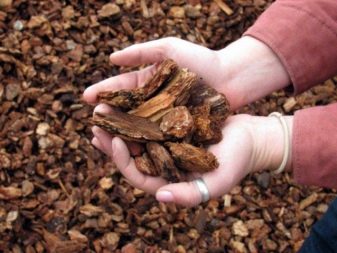
How to care?
When the first shoots appear, you need to properly care for the black flowers. Bulbs that have failed to germinate must be removed from the soil so that healthy tulips cannot be exposed to pests.
Watering
Good watering is essential. The roots of black tulips cannot receive liquid in the deep soil layer. But since flowers need a lot of moisture during bud formation, flowering and another 15 days after flowering, tulips need to be thoroughly and constantly watered.
The main thing is to make sure that the water does not stagnate. If the liquid stagnates, the bulbs will start to rot and the plant itself will die.
When watering is carried out, it is necessary to spend from 16 to 41 liters of liquid per 1 square meter.
Do not water the leaves so that burns do not appear on them.... Once the flowers have been watered, the soil should be weeded and loosened. This method will help retain fluid in the soil and also prevent weeds from growing. You also need to carry out the procedure for mulching the land.
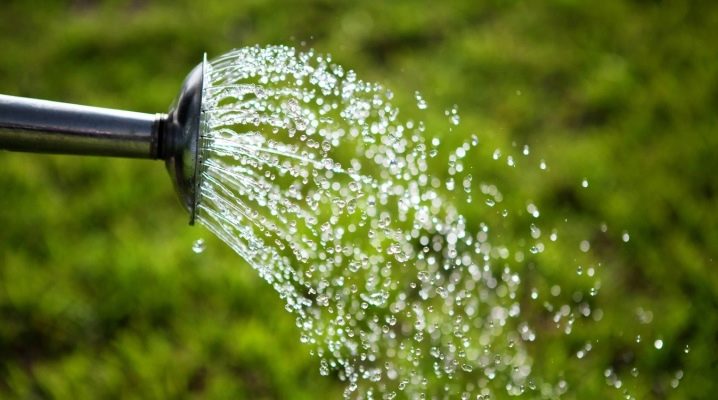
Pruning
Pruning black tulips should be done according to certain rules:
- If black flowers were grown in order to carry out their further reproduction, then you need to cut off the plant heads 5-9 days after the bud blossoms. This method will help the bulb gain weight.
- Fallen petals must be removed.Otherwise, they will accumulate in the axils of the leaves and begin to rot.
- Once the flowering has passed, the stems of the flowers cannot be cut off, because the bulbs will not grow.
- If black tulips are grown for cutting, then once the bud and stem are removed, the flower will not be suitable for propagation because the bulb will stop growing. The term for cutting and digging out the bulb is from 2 to 4 weeks after the opening of the buds.
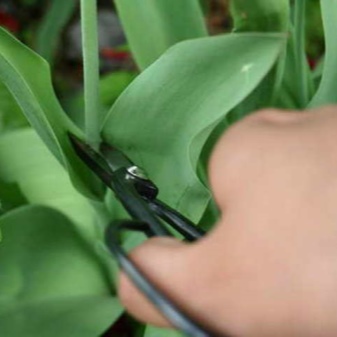
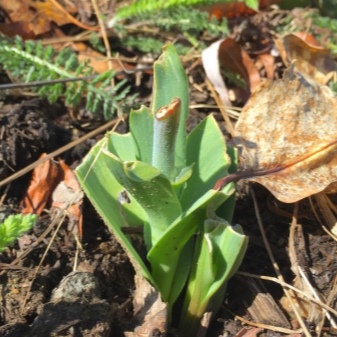
Top dressing and fertilization
These flowers must be fertilized using solutions. If the top dressing is dry, then you need to make sure that when using fertilizer, the leaves of the flowers are not moistened. If the leaves are wet, they can burn.
It is forbidden to put fresh manure before growing black flowers, as tulips will get sick.


As soon as the feeding process is over, it is necessary to water the flowers abundantly so that the fertilizer can be absorbed into the roots of the flower. The fertilizer consumption rate is 31-36 g per 1 square meter.
- First feeding should be produced in early spring, when the first shoots appear. Dry fertilizer contains nitrogen, phosphorus and potassium.
- Second feeding must be done before bud formation. For the second feeding, you need to use a liquid solution that will contain nitrogen, phosphorus and potassium.
- Third feeding it is necessary to carry out after flowering tulips, using a solution of potassium and phosphorus. In order for the daughter bulbs to develop well, boron and zinc must be added to the fertilizer solution.



Black tulips are unusual flowers that will look great on your property. If you take proper care of the plant, then it will grow stunning, harmonious and refined.
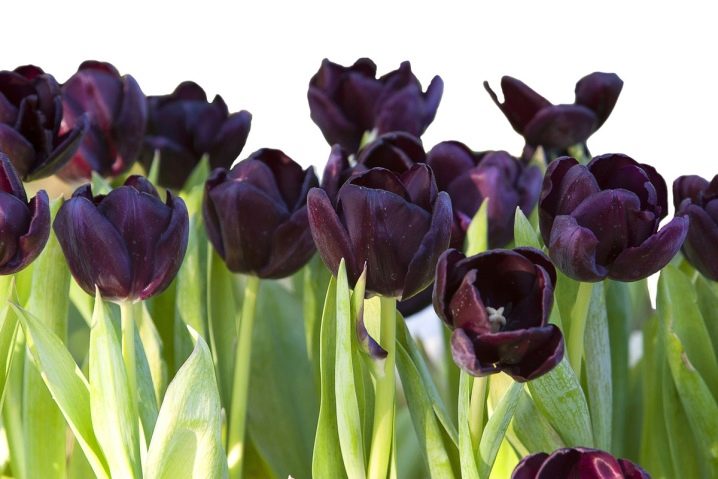
For general advice on the care and cultivation of tulips, see below.







































































































The comment was sent successfully.